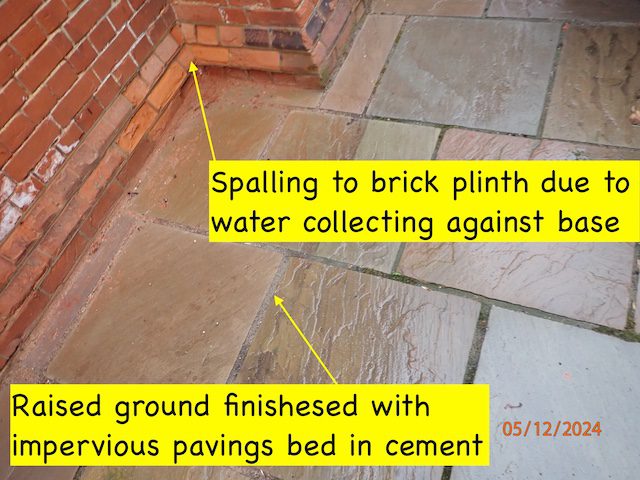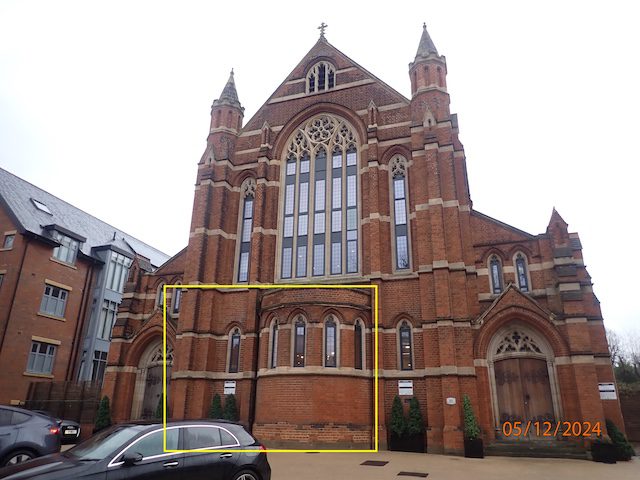
Initial Concern:
£20,000 Quote for Repairs !!!
Our services were sought after a client received an alarming repair quote of £20,000 to address what had been identified as rising and penetrating damp in a converted Victorian church. The client was understandably concerned about the high cost and the extensive scope of the proposed work. Given the historic nature of the property and the risk of modern repair methods causing further damage, we were asked to carry out a detailed survey and recommend appropriate solutions.
Following our investigation, we proposed a series of targeted measures to address both the symptoms and root causes of the dampness, avoiding unnecessary interventions while focusing on sustainable, long-term solutions.
Recommended Actions:
- Install an ACO drainage system to effectively redirect rainwater away from the building.
- Repair and ensure proper functioning of rainwater downpipes. £1,500–£2,000
- Replace damaged plasterboards with thermal boards featuring vapor barriers to prevent future moisture ingress. £900–£1,600
This represented a potential saving of £16,400–£17,600, compared to the original £20,000 quote. Our solutions were tailored to the specific needs of the property, ensuring the historic integrity of the building was preserved.
The Root Cause of the Dampness
Our survey identified several contributing factors that had been overlooked in the initial assessment:
External Issues:
- An ineffective rainwater drainage system had caused water to pool near the base of the building.
- Ground levels had been raised during the conversion, resulting in a terraced area that sloped towards the property. This allowed surface water to saturate the masonry, leading to freeze-thaw damage and brick spalling

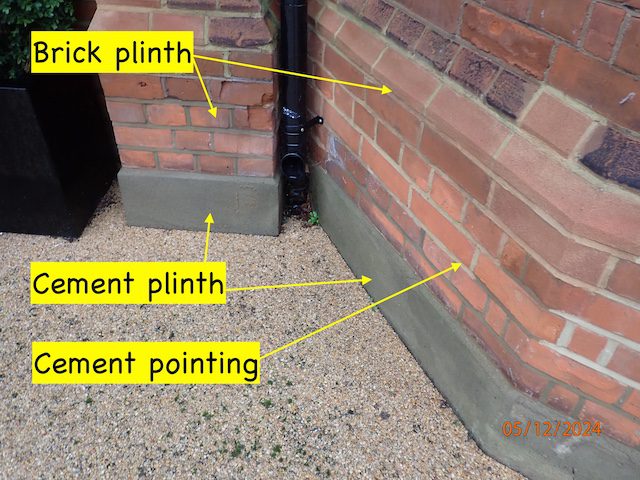
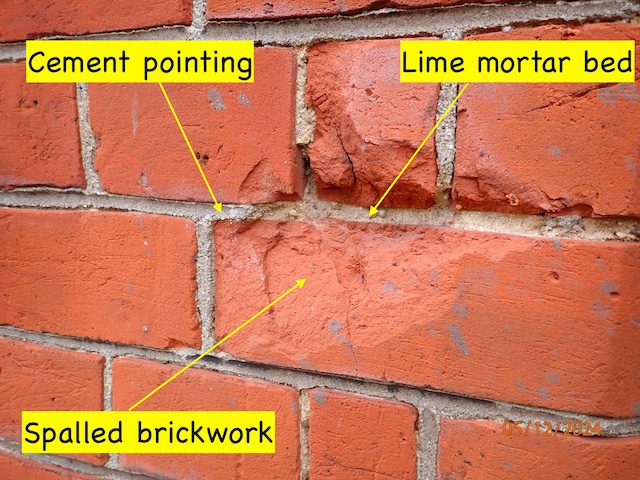
Internal Problems:
- The use of the “dot and dab” method to affix gypsum plasterboard had created pathways for moisture ingress.
- Thermographic imaging revealed cold spots where surface temperatures were below the dew point, creating ideal conditions for condensation. This had led to sagging plasterboards, bulging, and mould growth.
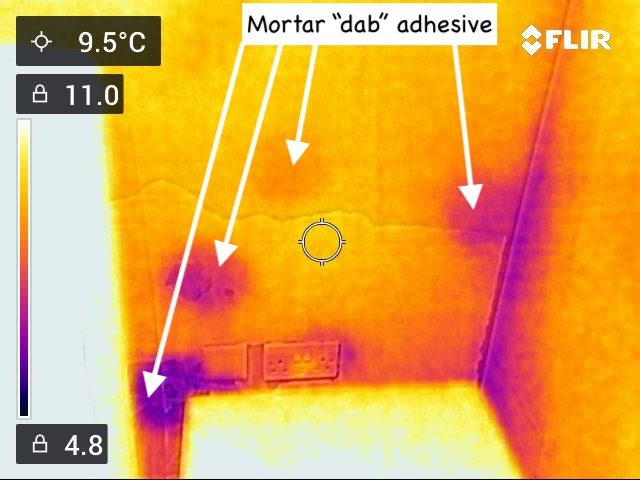
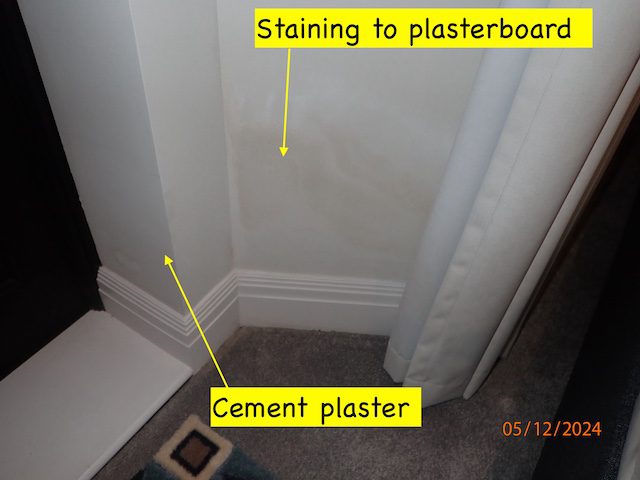
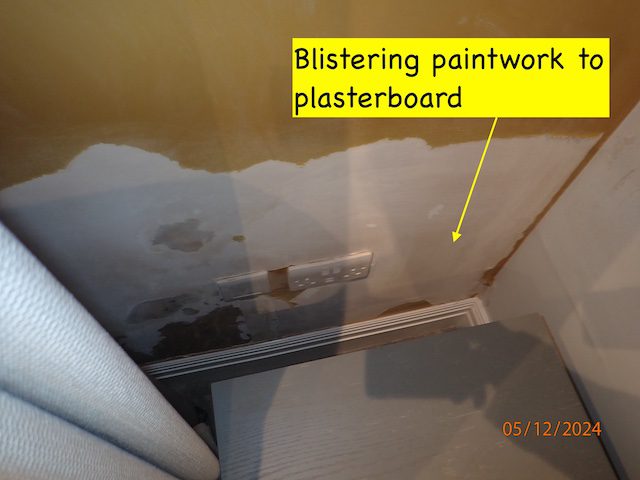
The Value of an Accurate Survey
Our findings indicated that the issues were not caused by rising damp, as initially suspected, but were instead the result of poor drainage, design flaws, and the use of incompatible materials.
This case highlights the importance of a professional survey, especially for heritage properties. The original quote proposed generic repairs that failed to address the underlying causes of dampness. Without our detailed investigation, the client risked spending a significant sum on ineffective solutions, with the likelihood of recurring issues.
Key Benefits of Our Intervention:
- Cost Savings: Our tailored recommendations saved the client up to 75% of the originally quoted costs.
- Long-Term Solutions: The proposed works not only resolved the damp issues but also ensured the structural and aesthetic preservation of the historic building.
- Avoiding Misdiagnosis: By identifying the true causes of the dampness, we prevented the application of inappropriate repairs, which could have exacerbated the damage.

